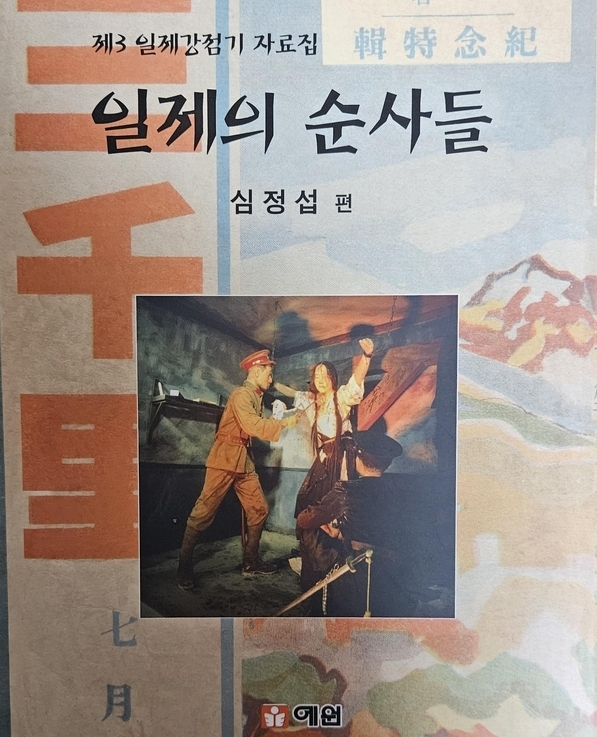
우리투데이 이동현 기자 | 대한민국 최초의 근대적 경찰 기구는 일제의 한국통감부 경무부를 전신으로 하는 조선총독부 경무국이다. 1919년 8월 20일에 헌병경찰 제도가 혁파되면서 경무총감부와 각 도의 경무부가 폐지되면서 총독부에 경무국이 설치되었고 지방에서는 도청에 경찰부가 설치되어 도지사가 경찰권을 행사하기 시작했다. 도청의 경찰부 예하에 경찰서가 설치되었고, 각 경찰서 소속으로 경찰관 주재소와 경찰관 파출소가 편성되었다.
1945년 해방 당시 조선총독부 관할 일본 제국 경찰 2만 6,677명 중 조선인은 40퍼센트인 1만 619명이었다. 직급별로는 도 경찰부장 1명(일본인 12명), 경시 21명(일본인 48명), 경부 105명(일본인 433명), 경부보에 220명(일본인 790명)이었다. 나머지 조선인 경찰관 1만 272명(일본인 1만4,775명)은 비간부급인 순사부장과 순사였다.
일제 패망 후 총독부 경무국(중앙)과 경찰부(지방)로 이루어진 일본 제국 경찰 제도를 바탕으로 군정법령에 의거 미군정청 경무국 및 각 도 경찰부를 설치했다.
이듬해인 1946년 경무국이 경무부로 승격되며 각 과가 국으로 개편되어 총무국, 공안국, 수사국, 통신국, 교육국으로 구성되었다.
1946년에 경찰의 숫자는 23,000명으로 육군의 전신인 조선경비대의 4배가 넘었다. 1948년 8월 15일 대한민국 정부가 수립되고 내무부(現 행정안전부)가 신설되면서 내무부 치안국(治安局)으로
개편됐다. 1974년 12월 31일에는 치안국에서 치안본부(治安本部)로 개편되었다.
1991년 대통령령을 바탕으로 경찰법을 입법하면서 기존의 치안본부를 내무부의 외청(外廳)인 경찰청으로 개편하며 내무부 치안본부장이 경찰청장이 되었고, 광역지자체 산하의 시/도 경찰국을
경찰청 직할의 지방경찰청으로 개편하면서 시/도경 국장은 지방경찰청장이 되어 내무부장관 및 경찰청장의 명령에 따라 광역자치단체의 치안을 분담하는 체계가 만들어졌다.
결국 지금의 경찰은 일제강점기 조선인들을 억압하고 감시했던 일본 제국 경찰들 통칭하는 말인 '일제 순사들'이라고 표현한다고해도 잘못된 표현은 아니라고 본다.
이들은 독립운동가들을 체포하고 고문하는 등 잔혹한 탄압을 일삼았으며, '일경' 또는 '왜경' 등으로 불리었다. 그당시 '순사'는 원래 일본 경찰 계급 중 최하위 계급이었지만, 일제강점기에는 공포와 억압의 상징으로 사용되었다.
본지는 충청남도 보령시에서 벌어진 A주민의 생생한 증언을 통해 보령시와 보령경찰서가 벌인 일을 만천하에 공개할 예정이다.
大韓民国初の近代的警察機構は、日帝の韓国統監府警務部を前身とする朝鮮総督府警務局である。1919年8月20日に憲兵警察制度が廃止され、警務総監部と各道の警務部が
廃止されると、総督府に警務局が設置され、地方では道庁に警察部が設置されて道知事が警察権を行使し始めた。道庁の警察部傘下に警察署が設置され、各警察署所属として
警察官駐在所と警察官派出所が編成された。
1945年解放当時、朝鮮総督府管轄の日本帝国警察2万6,677名のうち朝鮮人は40パーセントにあたる1万619名であった。職級別では道警察部長1名(日本人12名)、警視21名(日本人48名)、
警部105名(日本人433名)、警部補220名(日本人790名)であった。残りの朝鮮人警察官1万272名(日本人1万4,775名)は非幹部級の巡査部長と巡査であった。
日本敗戦後、総督府警務局(中央)と警察部(地方)で構成された日本帝国警察制度を基に、軍政法令に基づき米軍政庁警務局及び各道警察部を設置した。
翌1946年、警務局が警務部に昇格し、各課が局に改編され、総務局、公安局、捜査局、通信局、教育局で構成された。
1946年の警察の人員数は23,000名で、陸軍の前身である朝鮮警備隊の4倍以上に達した。1948年8月15日に大韓民国政府が樹立され、内務部(現・行政安全部)が新設されると、内務部治安局に改編された。1974年12月31日には治安局から治安本部へ改編された。
1991年、大統領令に基づき警察法を立法化すると、既存の治安本部を内務省の外庁である警察庁へ改編し、内務省治安本部長が警察庁長官となった。広域自治体の傘下の市・道警察局を
警察庁直轄の地方警察庁に改編し、市・道警察局長は地方警察庁長となり、内務部長官及び警察庁長の命令に従い広域自治体の治安を担う体制が構築された。
結局、現在の警察は日帝強占期に朝鮮人を抑圧・監視した日本帝国警察を総称する「日帝巡査」と表現しても誤った表現ではないと考えられる。
彼らは独立運動家を逮捕・拷問するなど残酷な弾圧を繰り返し、「日警」または「倭警」などと呼ばれた。当時「巡査」は本来、日本警察階級の中で最下位階級であったが、日本植民地時代には
恐怖と抑圧の象徴として使用された。
本紙は忠清南道保寧市で起きたA住民の生々しい証言を通じ、保寧市と保寧警察署が行ったことを天下に公開する予定である。
The first modern police organization in the Republic of Korea was the Police Bureau of the Government-General of Korea, which succeeded the Police Department of the Japanese Government-General of Korea. On August 20, 1919, the military police system was abolished, leading to the dissolution of the Police Headquarters and provincial police departments. Consequently, the Police Bureau was established within the Government-General, while provincial police departments were set up under provincial offices, enabling provincial governors to exercise police authority. Police stations were established under the provincial police departments, and within each police station,
police officer substations and police officer outposts were organized.
At the time of liberation in 1945, out of the 26,677 Japanese Imperial Police under the jurisdiction of the Government-General of Korea, Koreans constituted 40 percent, or 10,619 officers. By rank, there was 1 Provincial Police Chief (12 Japanese), 21 Police Commissioners (48 Japanese),
105 Police Captains (433 Japanese), and 220 Assistant Police Captains (790 Japanese). The remaining 10,272 Korean police officers (compared to 14,775 Japanese officers) were non-supervisory rank officers: police station chiefs and constables.
After Japan's defeat, the Japanese Imperial Police system—comprising the Governor-General's Police Bureau (central) and Police Departments (local)—served as the basis for establishing the Military Government Police Bureau and provincial police departments under the Military Government Ordinance.
The following year, in 1946, the Police Bureau was elevated to the Police Department, with its divisions reorganized into bureaus: General Affairs Bureau, Public Safety Bureau, Investigation Bureau, Communications Bureau, and Education Bureau.
In 1946, the police force numbered 23,000, more than four times the size of the Korean Constabulary, the predecessor of the Army. On August 15, 1948, the Government of the Republic of Korea was established and the Ministry of the Interior (now the Ministry of the Interior and Safety) was newly created, reorganizing the force into the Public Safety Bureau under the Ministry of the Interior. On December 31, 1974, it was reorganized from the Security Bureau into the Security Headquarters.
In 1991, based on a presidential decree, the Police Act was legislated. The existing Security Headquarters was reorganized into the National Police Agency, an external agency under the Ministry of Interior. The head of the Ministry of Interior's Security Headquarters became the Commissioner General of the National Police Agency. The city/provincial police bureaus under metropolitan governments
were reorganized into regional police agencies directly under the National Police Agency. The heads of these city/provincial police bureaus became regional police agency chiefs, creating a system where they shared responsibility for public security in metropolitan governments under the orders of the Minister of Internal Affairs and the National Police Agency Commissioner.
Ultimately, describing the current police as ‘Japanese colonial police officers’—a term collectively referring to the Japanese imperial police who oppressed and monitored Koreans during the Japanese occupation—is not an incorrect expression.
They engaged in brutal suppression, arresting and torturing independence activists, and were called ‘Japanese police’ or ‘Wa-gyeong’ (Japanese police). Although ‘police officer’ was originally the lowest rank in the Japanese police hierarchy, during the Japanese colonial period,
it became a symbol of terror and oppression.
This publication intends to expose to the world the actions taken by Boryeong City and the Boryeong Police Station, based on the vivid testimony of Resident A from Boryeong City, Chungcheongnam-do.

